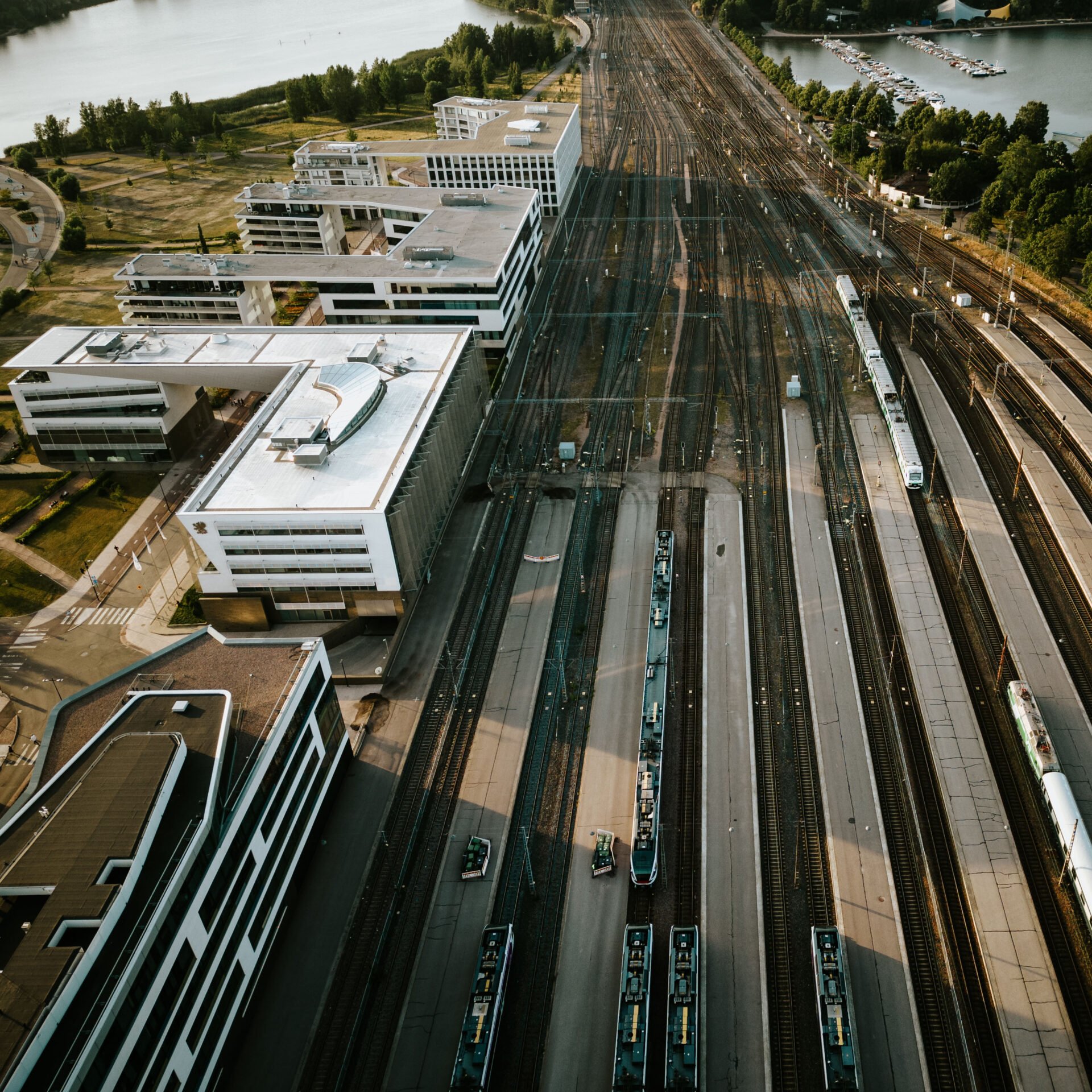Railway projects are significant in scope, and their planning proceeds in stages.
- A prefeasibility study is carried out to assess matters such as the timing of the railway project with respect to the regional land use plan and the master plan. At this stage, there may be several options for the alignment of the railway lines that will be further specified as the prefeasibility study progresses.
- General planning is carried out, defining the approximate location and space requirements of the railway in relation to land use in the surrounding areas.
- Railway planning is carried out, resulting in detailed plans with the purpose of implementing the railway project. The railway plan presents the alignment of the line so accurately that it can be marked out on the ground.
In addition, the projects must go through an environmental impact assessment (EIA), which is a statutory process for evaluating the likely impact of the railway project on nature, the built environment and the health and well-being of humans, as well as the use of natural resources.
Previous planning stages
You can learn more about the previous planning stages of the West Railway on the project pages of the Finnish Transport Infrastructure Agency.
Railway planning
West Railway Ltd has produced five railway plans for the rail link between Helsinki and Turku, the technical parts of which have been completed. After the railway plans have been completed, the project will move on to the administrative stage where the plans are made public.
The railway plans will be approved by the Finnish Transport and Communications Agency Traficom. The railway plans will remain valid for four years.
You can read more about the West Railway’s plans here.
Construction stage
The construction planning can be started once the railway plans’ technical parts have been completed. The expropriation of the necessary land and real estate will become relevant after the investment decision has been made.
The construction planning, construction and commissioning of the West Railway will take place in 2025–2032. The commissioning and testing of the railway can begin during the later years of the project.
According to the Government Programme, the new rail link between Helsinki and Turku will be implemented and construction will begin with the Espoo–Lohja and Salo–Kupittaa connections. The objective of West Railway Ltd is to launch construction planning of the entire connection during 2025, and begin construction on the Espoo–Hista and Salo–Halaja connections in 2027 at the latest.
A decision on construction has not yet been made.
Funding
Railway planning
The costs of producing railway plans for the Espoo–Salo direct line and the Salo–Turku double-track railway line total approximately EUR 75 million so far. The costs have been covered by means of capitalization by the shareholders of the project company. The members’ financial contributions have been determined by their shares of ownership: the project company is owned by the state with a share of 51% and by the municipalities with a share of 49%.
The contributions of the municipalities involved in the project are as follows:
- City of Turku EUR 10.25 million
- City of Espoo EUR 10.25 million
- City of Helsinki EUR 5.80 million
- City of Salo EUR 3.74 million
- City of Lohja EUR 3.74 million
- Municipality of Vihti EUR 3.74 million
- Municipality of Kirkkonummi EUR 0.38 million
As a significant project, the project has also been awarded EU funding (Connecting Europe Facility, CEF) for its planning. The EU funding awarded under CEF will cover 50 per cent of the costs (EUR 37.5 million at maximum) incurred in the planning of the Espoo–Salo direct line and the Salo–Turku double-track line.
First construction phase
The shareholders of West Railway Ltd have expressed their intention to capitalize West Railway Ltd in order to cover the costs of further planning of the rail line and the construction of the first phase. The costs of the first construction phase are estimated to be EUR 1.3 billion, covering the construction planning for the entire connection and the construction of the first railway sections (Espoo–Lohja and partial construction of double-track railways for Salo–Hajala and Nunna–Kupittaa).
The cost estimate for the entire project is approximately EUR 3 billion, which also includes the next phase: construction of the Lohja–Salo direct line and the Hajala–Nunna double-track line.


